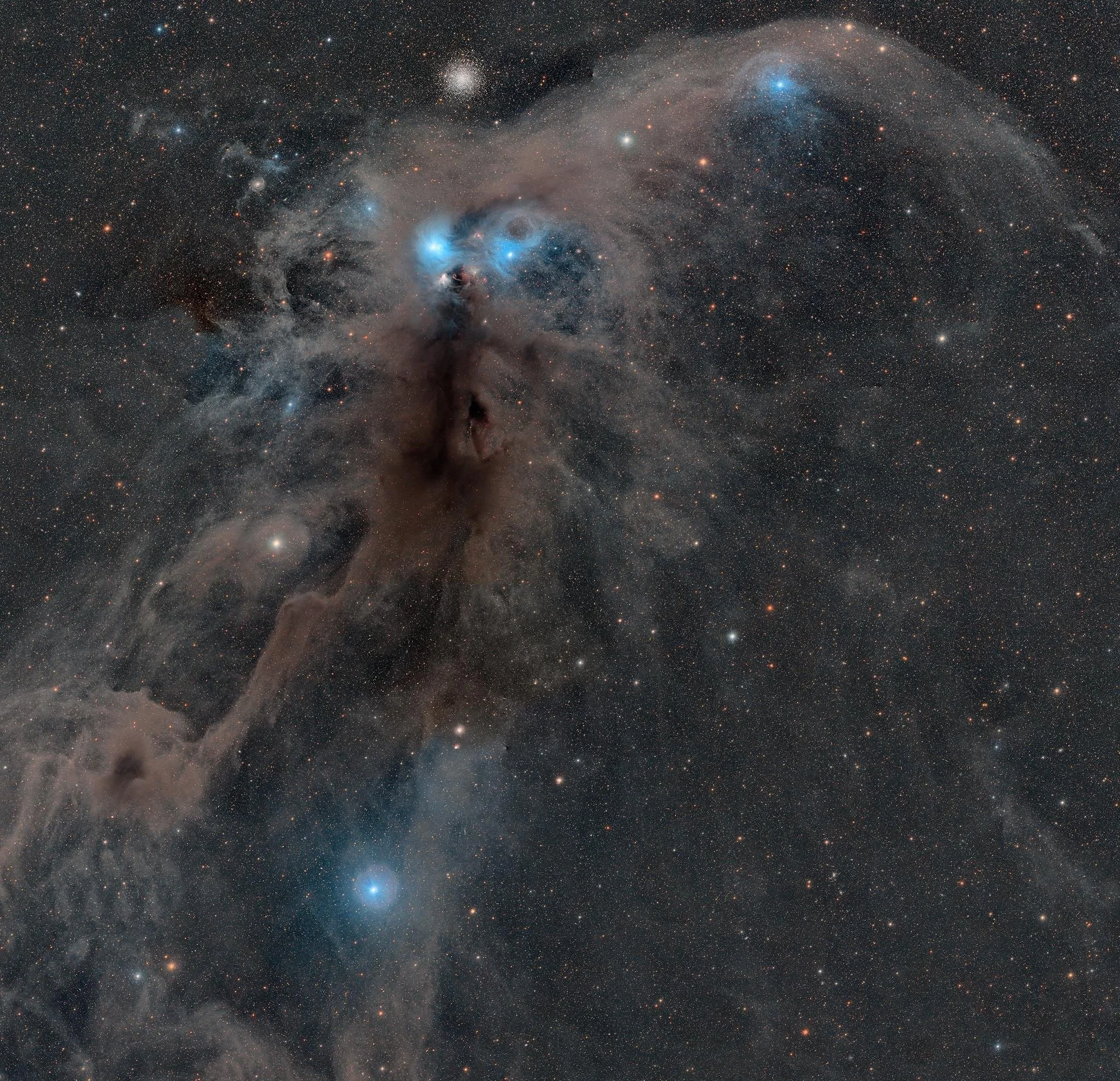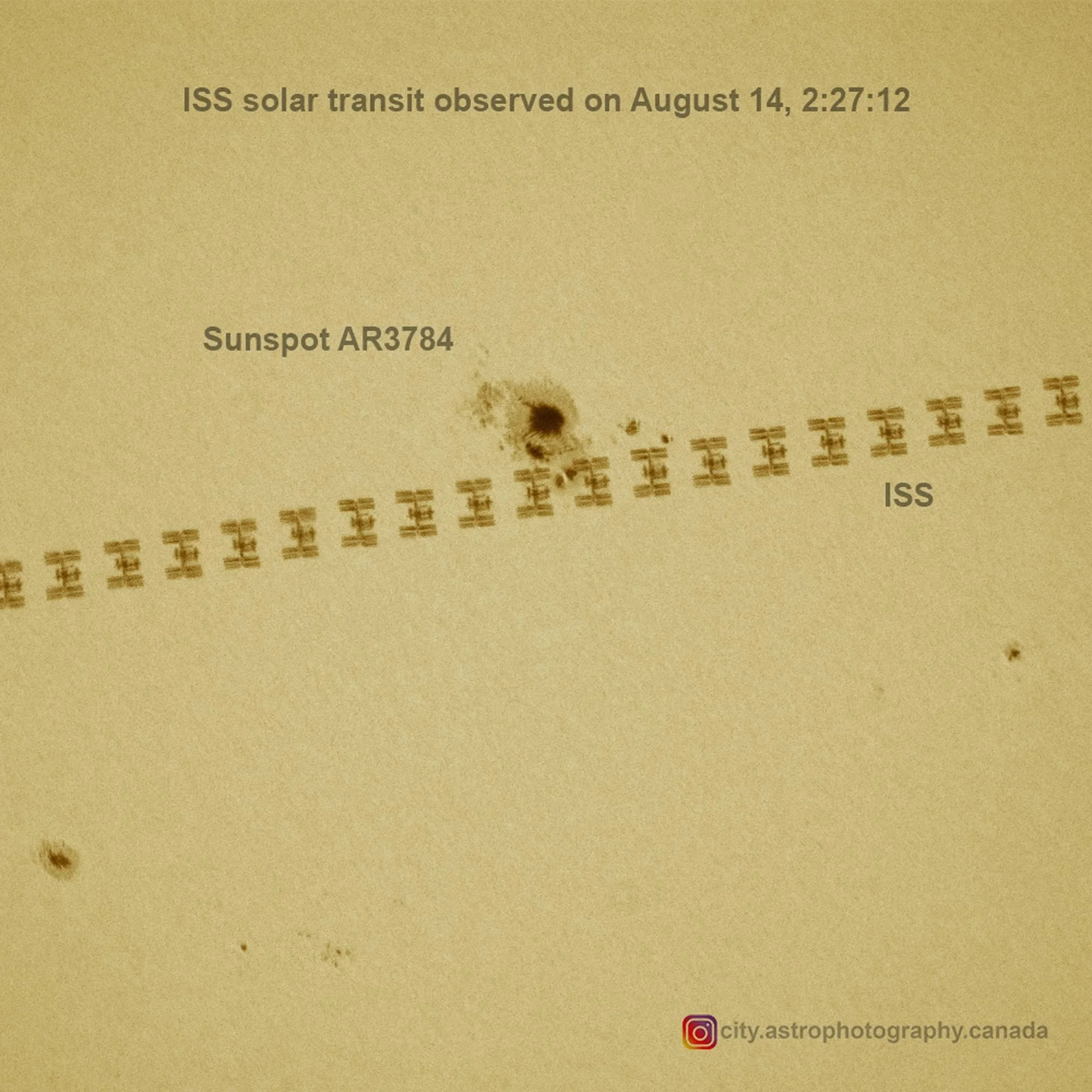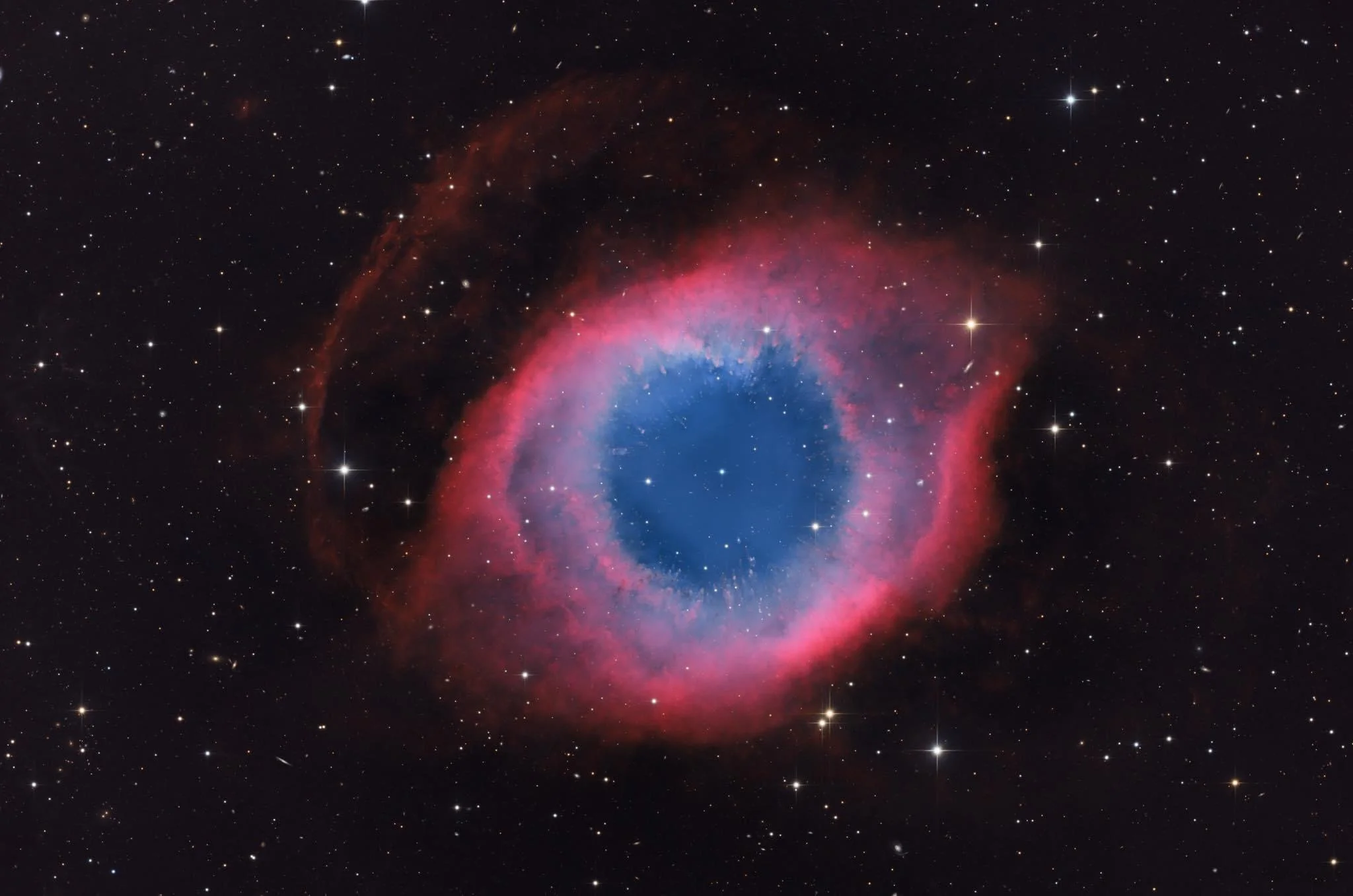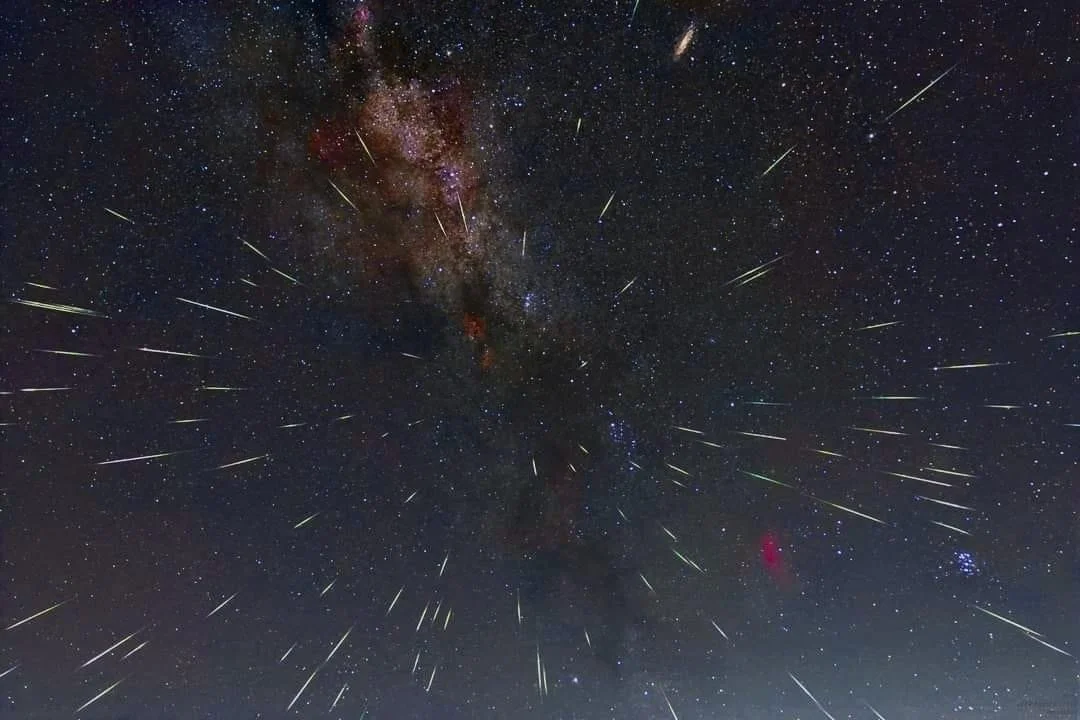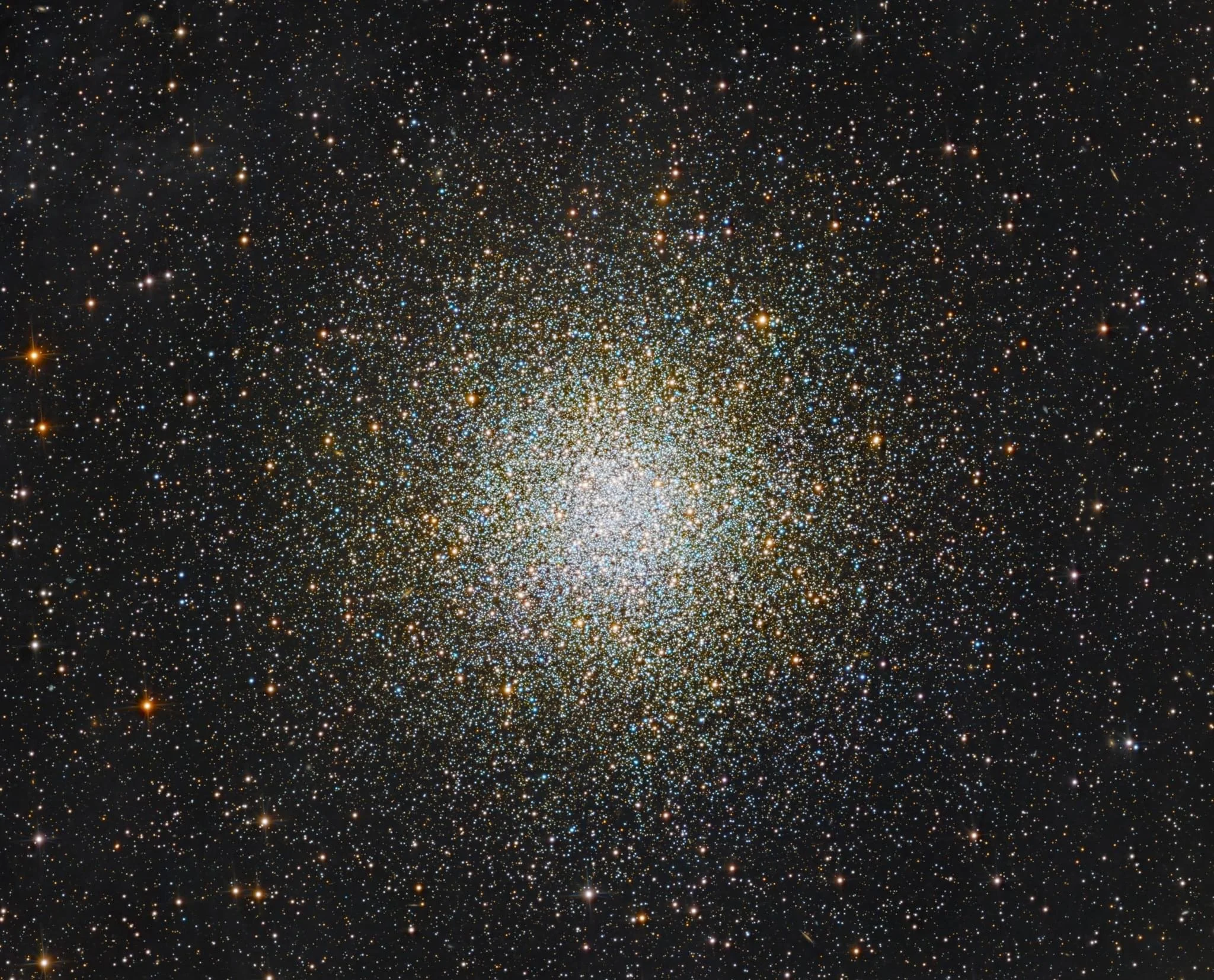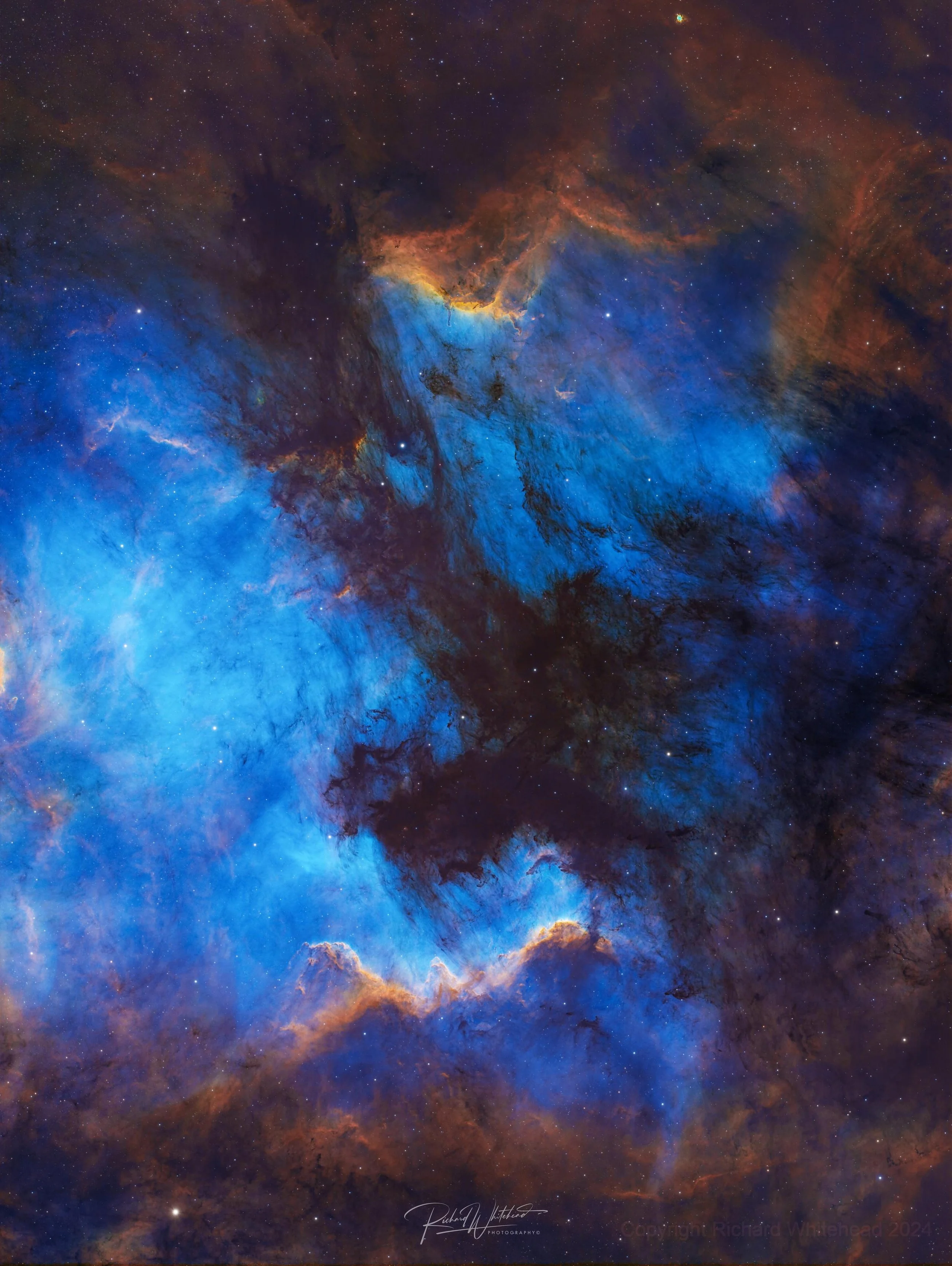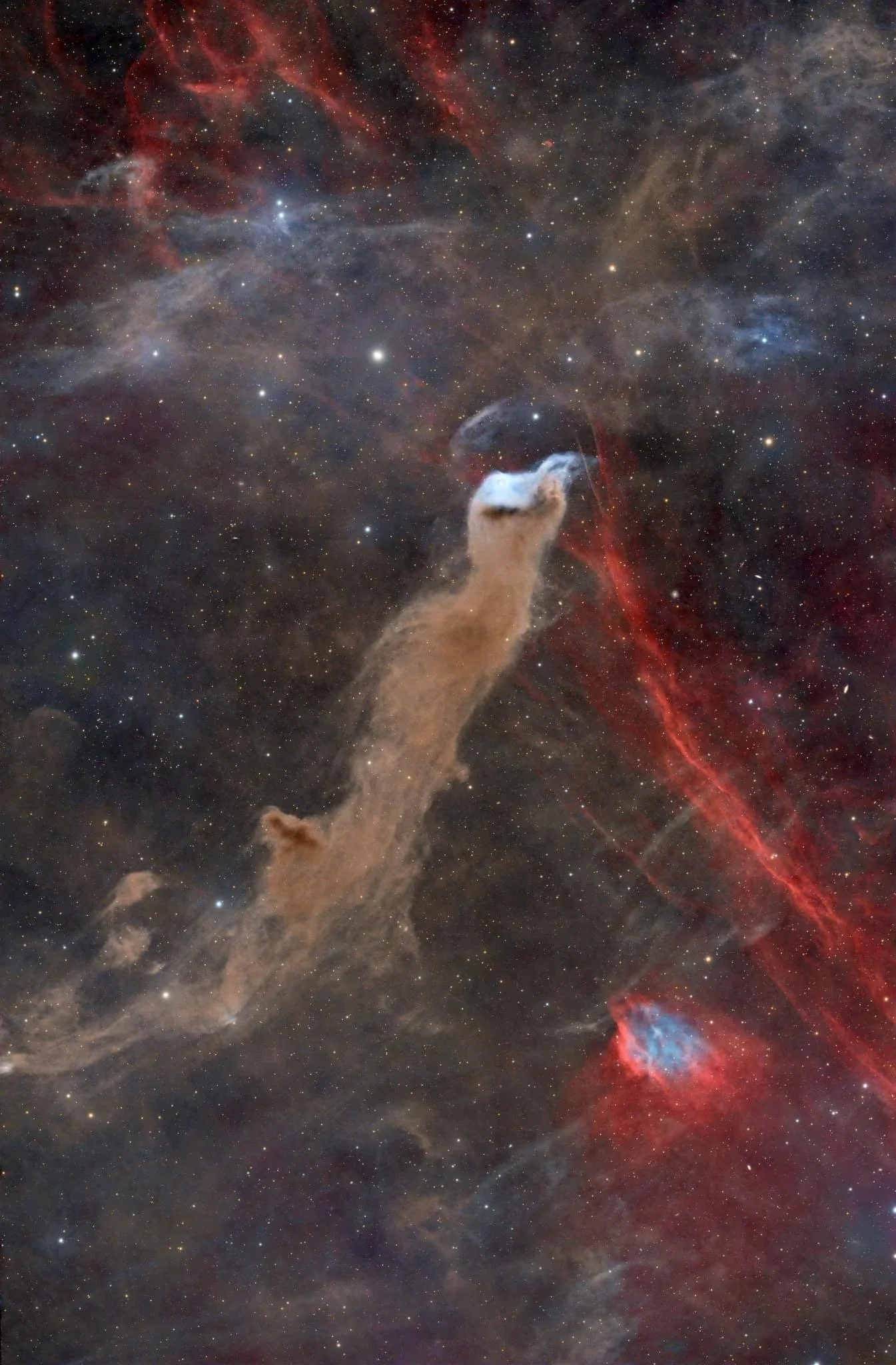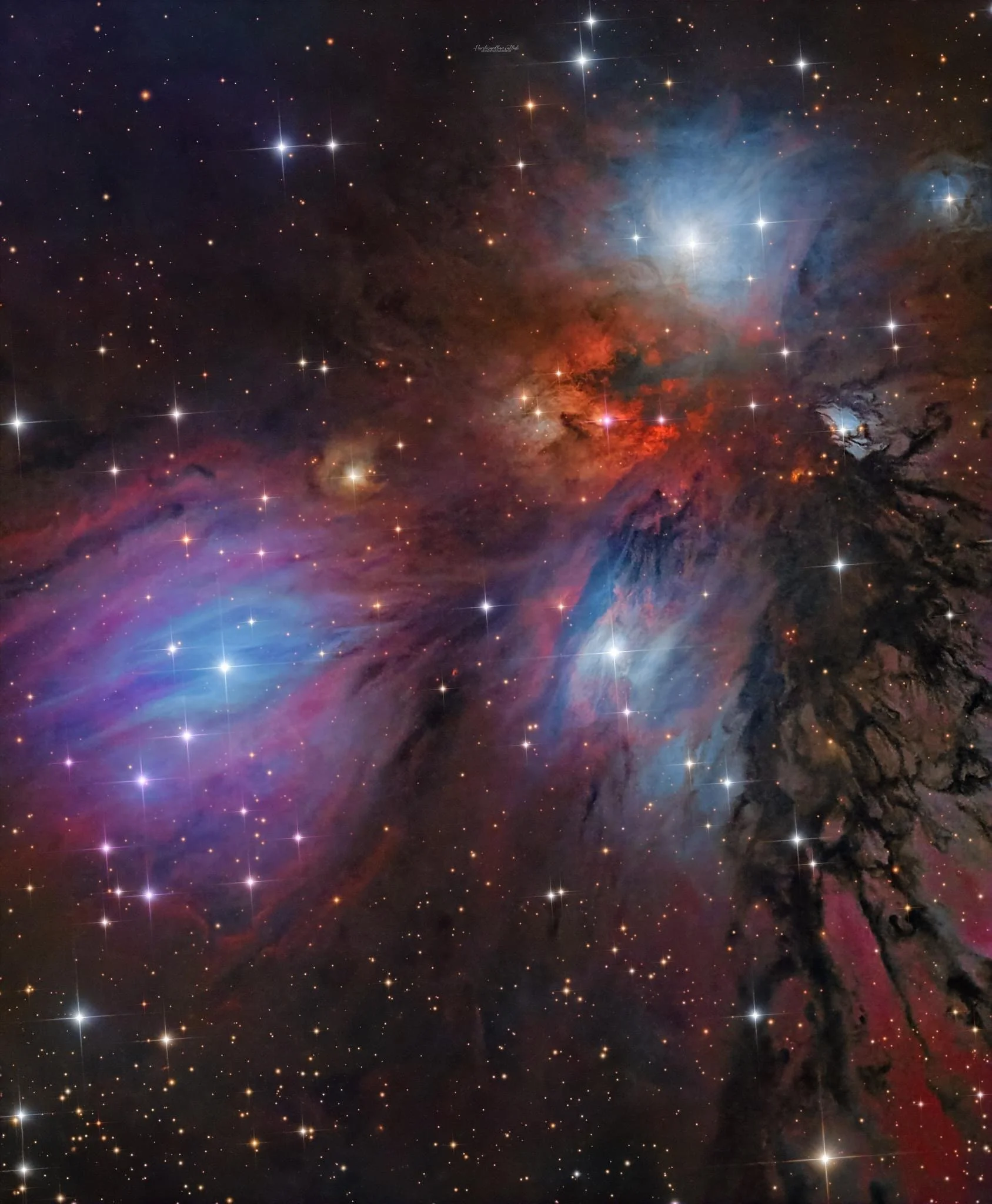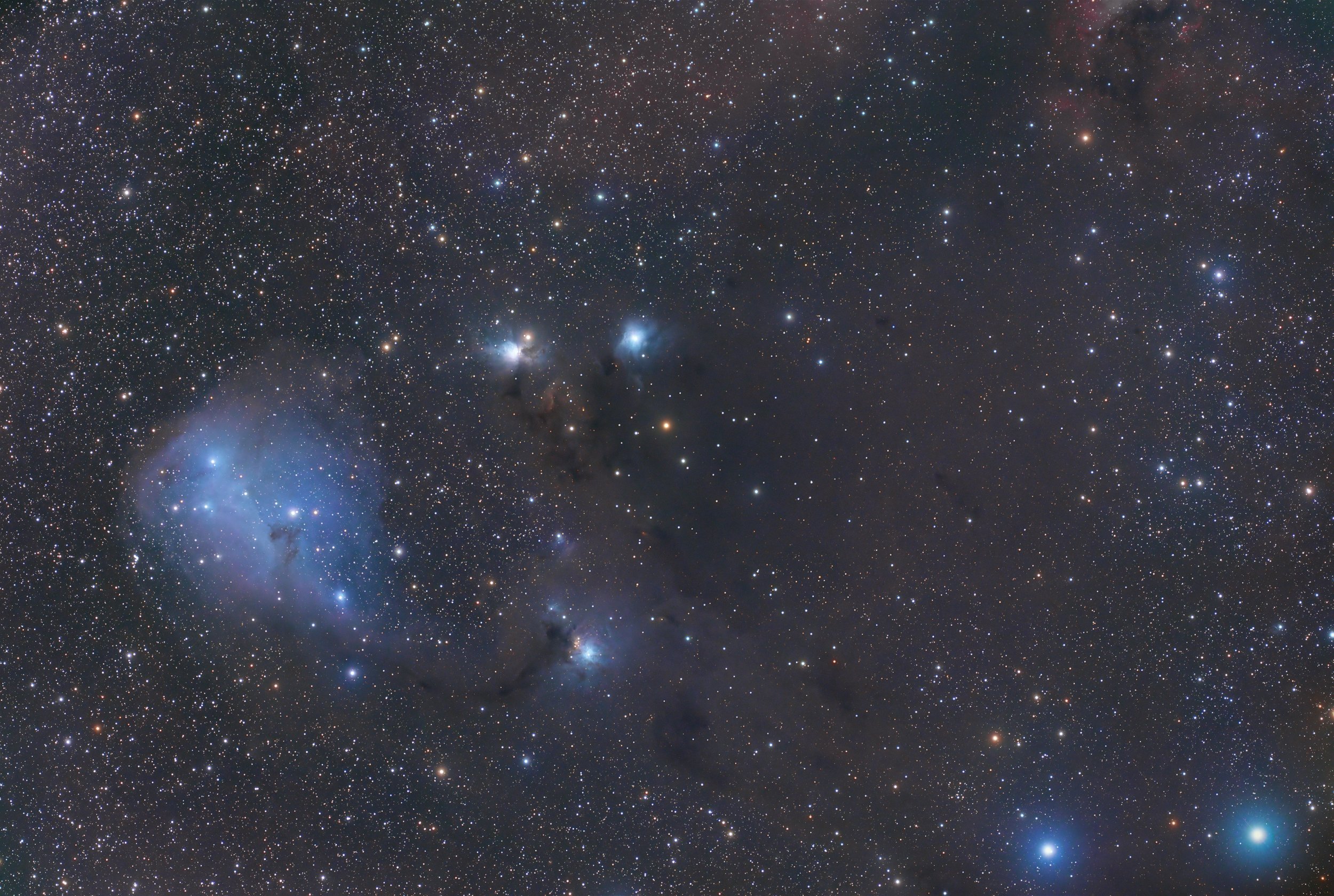
AAPOD2 Image Archives
Wolfs Den Nebula
The Wolf’s Den Nebula
This image, shot during May to July 2024, shows a heavily crowded are in constellation Cepheus, with a blend of several nebula types. In the center, pillars of dust create a wormlike structure called LDN 1217, which ends in a bluish reflexion nebula (VdB 152). In the background, more dark nebulas can be seen, in some parts being lit by hot blue giants stars. In this area, it partially blocks the red light coming from the Ha strands farther away, which impairs the sense of perspective.
Hind's Variable Nebula
Image Description and Details: least photographed object.The Hind Nebula(Herbig-Haro object), prototypical example is the variable star T Tauri, visible as the bright orange star near the image center. The orange star centered in this remarkable telescopic sky view is T Tauri, prototype of the class of T Tauri variable stars. Surrounding T Tauri is a dusty yellow cosmic cloud named the Hind's Variable Nebula (NGC 1555/1554).
Total Exposure: 9Hours 45minutes
Equipment Details: Telescope: Planewave CDK24
Camera: QHY 600M Pro
Filters: Astrodon LRGB
Mount: Mathis MI-1000/1250
Copyright: Credit & Copywrite: Harshwardhan Pathak/Telescope live
The Core of the Lagoon Nebula
Image Description and Details: The Lagoon Nebula is a giant interstellar cloud in the constellation Sagittarius. It is classified as an emission nebula and as an HII region.
It was discovered by Giovanni Hodierna before 1654 and is one of only two star-forming nebulae faintly visible to the eye from mid-northern latitudes. Seen with binoculars, it appears as a distinct cloud-like patch with a definite core. Within the nebula is the open cluster NGC 6530.
- Exposure: 6h55m.
- Acquisition: Image data acquired remotely using the Telescope Live CHI-1 telescope.
- Processing: PixInsight & Adobe Photoshop.
Equipment Details: - Optics: Planewave CDK24.
- Camera: QHY600M CMOS.
- Filters: Astrodon SHO.
Copyright: Credit & Copyright: Chris Willocks / Telescope Live.
Name: Christopher Willocks
Pillars of NGC 7822
Image Description and Details: NGC 7822 is a young star forming complex in the constellation of Cepheus. The complex encompasses the emission region designated Sharpless 171, and the young cluster of stars named Berkeley 59. The complex is believed to be some 800–1000 pc distant with the younger components aged no more than a few million years. The complex also includes one of the hottest stars discovered within 1 kpc of the Sun, namely BD+66 1673, which is an eclipsing binary system consisting of an O5V that exhibits a surface temperature of nearly 45,000 K and a luminosity about 100,000 times that of the Sun. The star is one of the primary sources illuminating the nebula and shaping the complex's famed pillars of creation-type formations
NGC 7380 - The Wizard Nebula
Image Description and Details: NGC 7380/ SH2 142 - The Wizard Nebula, is an open cluster of stars still embedded in the nebula out of which it formed. The stars are estimated to be about 4 million years old. The cluster is about 8,000 light years away in the constellation Cepheus.
Dusts in Cassiopeia
Image Description and Details: Southeast of the star Shedar, there is a vast molecular nebula area. LBN 603, LDN 1295, LDN1296, and TGU H809 are part of it and as well as others not shown. LBN603 is the 603rd object in the Lynds Bright Nebulae (LBN) Catalog, and the Lynds brightness scale of 1 (brightest) to 6 (dimmest) has this one at a 6. This was captured over a couple nights in October.
Partial Lunar Eclipse 28-29 October 2023
It was the last Lunar eclipse of the year and I tried to capture it successfully. As soon as it starts entering the umbral region, a dark shadow starts overlapping the moon and making it look like a "Bitten Biscuit." As the Umbral eclipse starts, the bands slowly turn orangish red and the shadow starts overtaking the brightness the Moon until it gets fully covered. The eclipse has no such effect on human beings as the rumours and superstitions roam around. The events of nature are meant to be enjoyed together.
SH2-119. The clamshell nebula
Location: Castillejar, Andalusia, Spain
Image Description and Details: 2200 years ago, when the photons of light left this nebula to reach us, the Earth was definitely another place. The cosmic time machine, the telescope, this time was pointed towards the constellation Cygnus, more precisely towards Sh2-119. Gas and dust envelop the main star, 68-Cygni being mostly responsible for the ionization of the gas around it. This ionization makes the gases all colored at different wavelengths, from blue to green, passing through all shades of brown and orange. The dark nebula filaments above contrast strongly with both the glow of the nebula and the rich field full of stars in the background. These filaments are clouds containing mostly gas (hydrogen and helium) and a minimal fraction of dust (about 1%), responsible for the appearance of the cloud. These dusts, although minimal, absorb the light, making the nebula completely dark. Sh2-119 is a celestial signature of an ancient explosion that released gas and dust into the universe, forming new stars and planets. The silk effect of the nebula makes us think of a white colored pillow in a bed of stars, but, among that dust, stars and planets are forming in the most violent and destructive processes.
Andromeda in narrow/broad-band with the recently discovered SDSO1!
Image Description and Details: The Fiery Veil of Andromeda!
Gaze upon the Andromeda Galaxy, our cosmic neighbour, as it reveals its hidden secrets. The crimson halo you see is the Ha emission, a testament to the vast clouds of hydrogen gas that envelop this majestic galaxy. It's like Andromeda's own ethereal aura, glowing softly against the backdrop of the cosmos.
Now, let's dive deeper. The inverted image you see is a result of meticulous processing of the data taken using the Radian Triad filter. But what's that faint glimmer to the left? Ah, that's the STROTTNER-DRECHSLER-SAINTY OBJECT 1. Processing this was no easy feat. It was like trying to hear a whisper in a storm. But with a blend of channels, some masking magic, and this ghostly presence was brought to life. Its amazing how the world of Oiii has so much for us unknown.
B150- Fireworks and Dust
Barnard 150 is a dark nebula visible in Cepheus constellation. It is also known as the Seahorse Nebula due to its shape.
Ngc1333 Wide field
Image Title: Ngc1333 Wide field
Image Description and Details: NGC 1333 is a reflection nebula located in the northern constellation Perseus.
This nebula is a young region of very active star formation, being one of the best-studied objects of its type.


